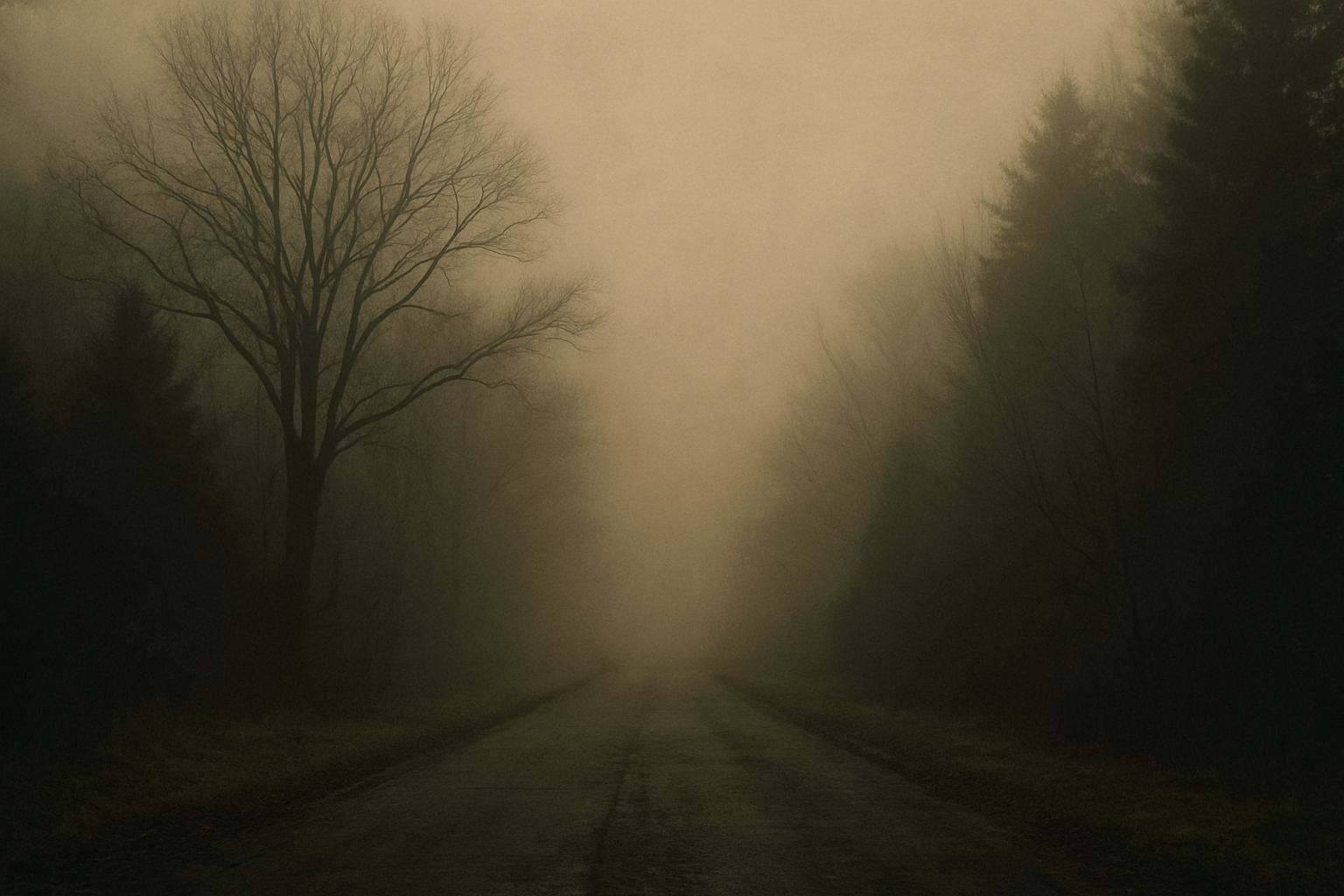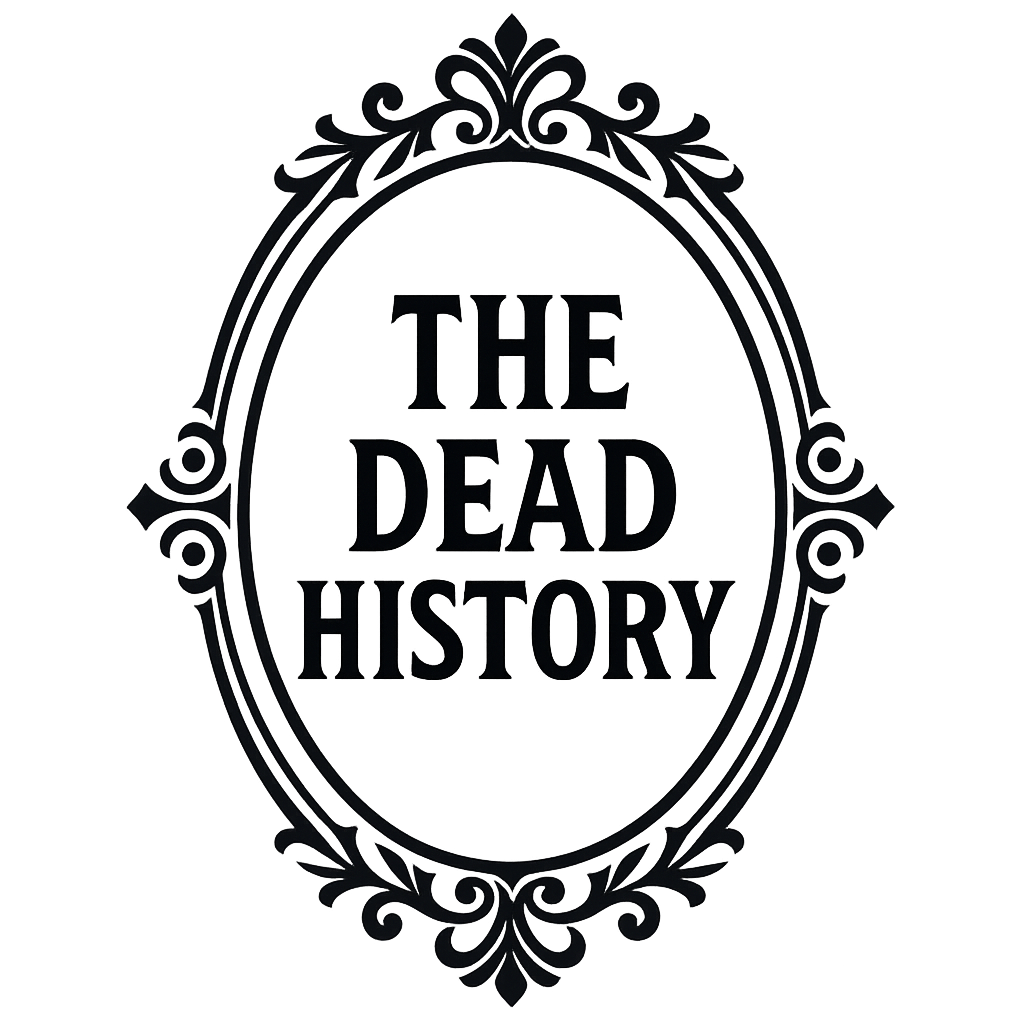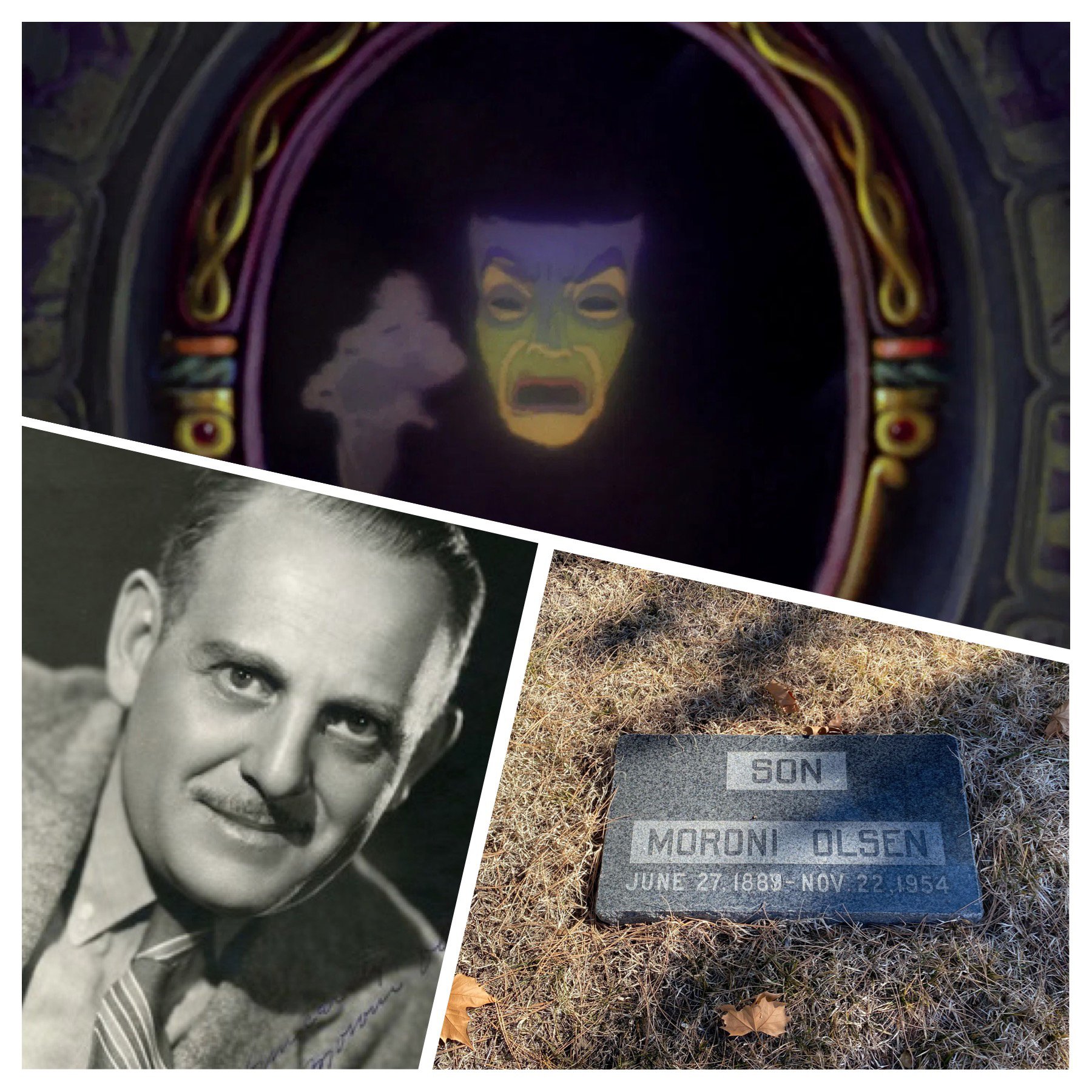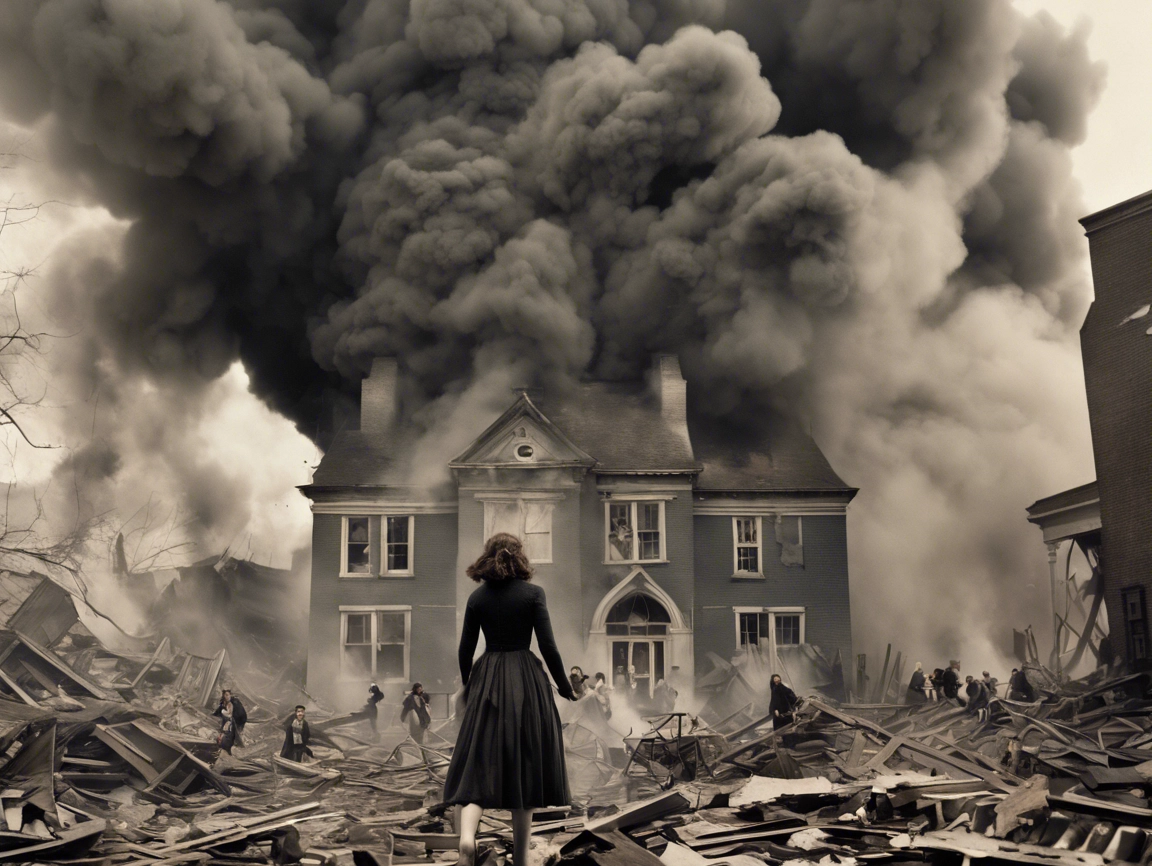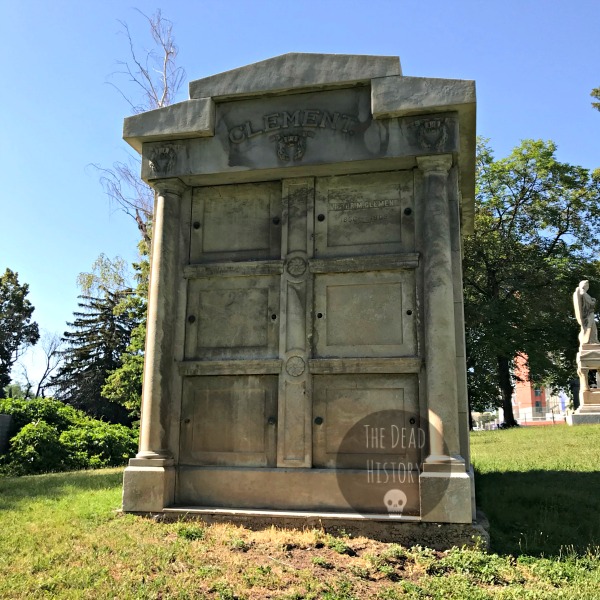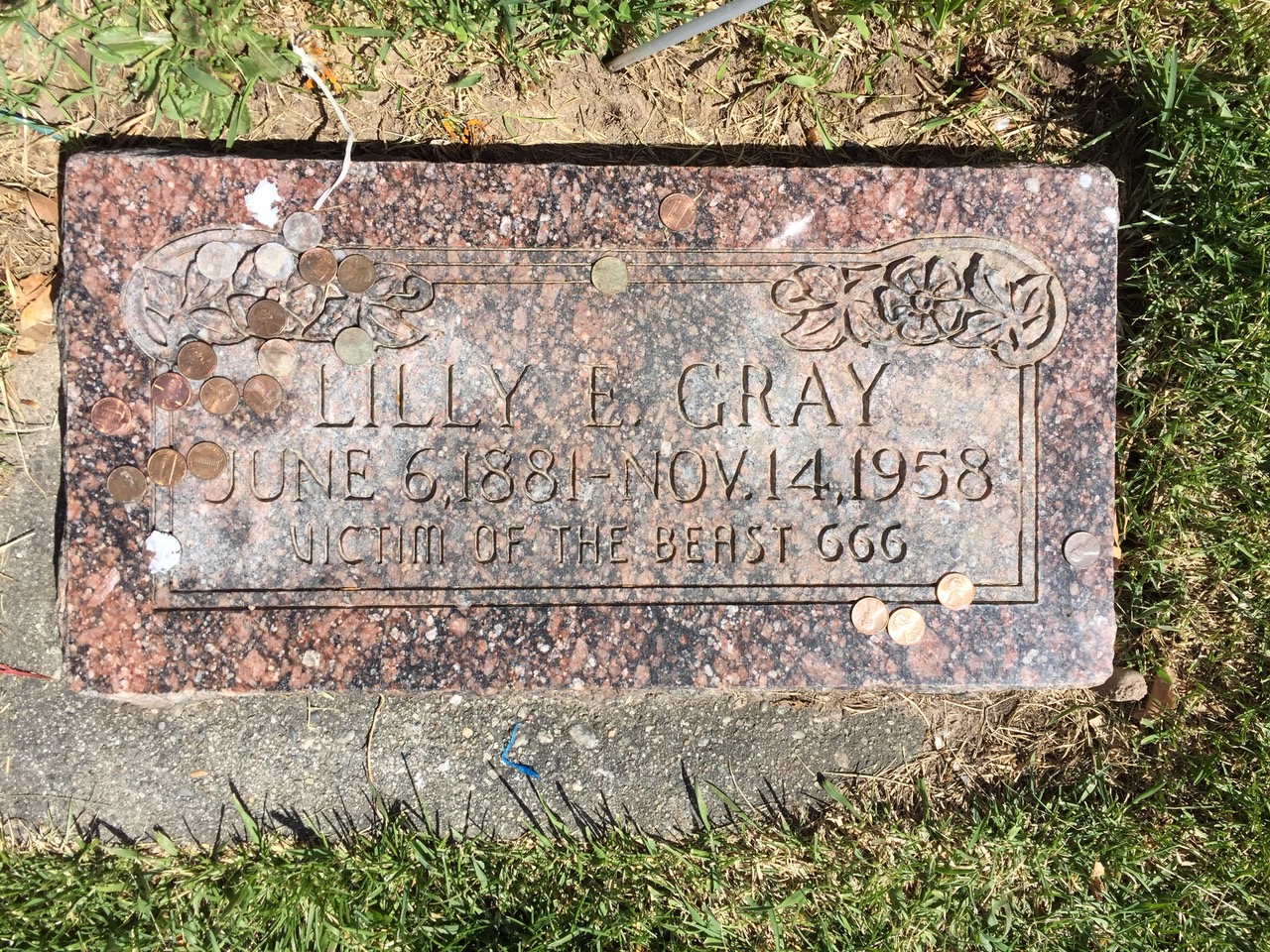Moroni Olsen never became a household name, but if you’ve ever seen Snow White and the Seven Dwarfs, you know his voice. That deep, commanding tone that warned the Evil Queen, “Magic Mirror on the wall…”? That was him. But before Hollywood, before Broadway, before his voice became one of the most recognizable in animation history, he was just a kid from Ogden, Utah. I wouldn’t have known any of this either, had I not stumbled upon his grave at the Ogden City Cemetery.
I wouldn’t have known any of this either, had I not stumbled upon his grave at the Ogden City Cemetery. I’m not sure what caused me to stop that day and take a picture of his headstone. But I did and here we are.
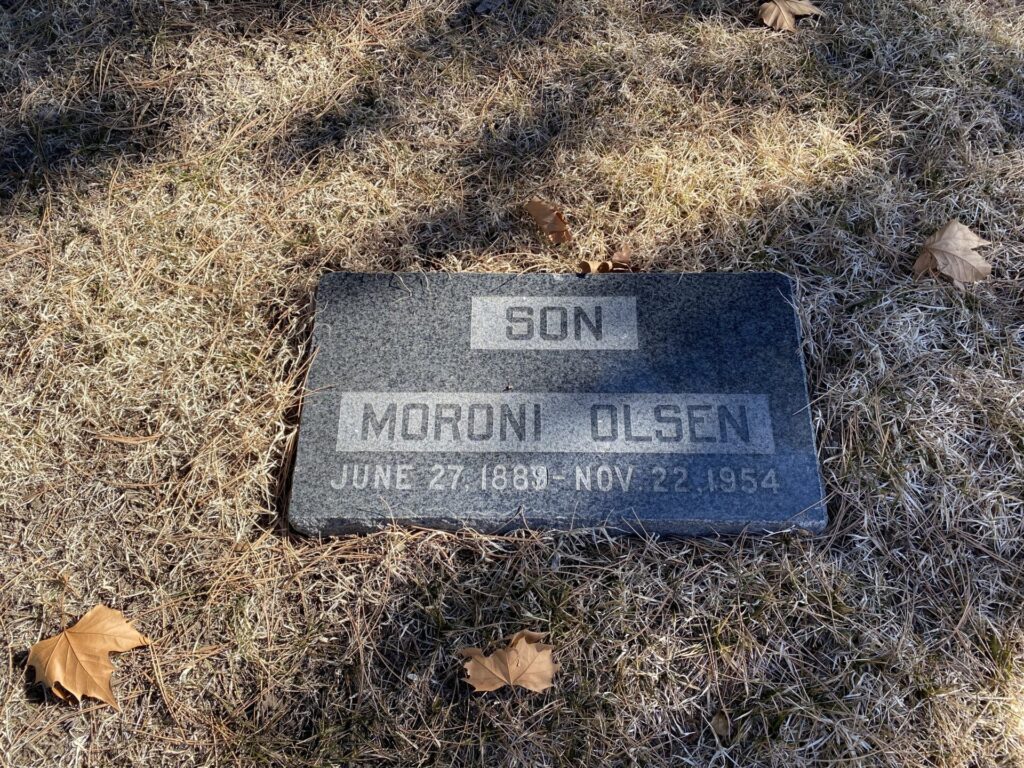
From Ogden to the Stage
Born in 1889, Moroni grew up in a prominent LDS family. His father, Edward Olsen, ran a successful business and held leadership roles in the church. That wasn’t the path Moroni wanted. He was drawn to the stage, performing in school plays at Ogden High before studying drama at the University of Utah under Maud May Babcock. From there, he trained at the Leland Powers School of the Theater in Boston, where he learned platform reading. It was all about voice and presence, no sets or costumes to hide behind. Today, it would be like audiobook narration, spoken-word performances, or one-person stage shows.
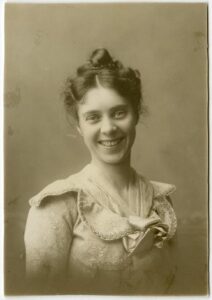

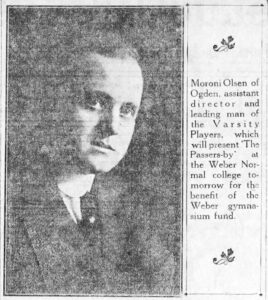
He returned to Ogden in the 1910s to teach drama and oratory at his old high school, directing plays and mentoring young actors. But teaching wasn’t enough. By the 1920s, he formed the Moroni Olsen Players, a repertory company that toured the West, bringing live theater to small towns that rarely saw professional productions. For seven years, they performed everywhere they could, but then the Great Depression hit. Theaters shut down. The company dissolved.
Finding His Place in Hollywood
Moroni went east. He landed on Broadway, performing in Medea, Romeo and Juliet, Joan of Arc, and Candida. Then Hollywood called. He made his film debut as Porthos in 1935’s The Three Musketeers. From there he found his niche playing fathers, judges, generals, and historical figures. He was Buffalo Bill in Annie Oakley. He was in The Fountainhead, Call Northside 777, Father of the Bride, and Samson and Delilah. But nothing would cement his legacy quite like his voice work for Disney’s Snow White.
Despite his success, he never really left Ogden behind. He returned often, directing local productions and lending his name to hometown projects. In 1954, he directed All Faces West for Ogden’s Pioneer Days celebration, refusing to take payment. The committee thanked him with a gold watch instead. That same year, he was directing Trelawny of the Wells at the Pasadena Playhouse.
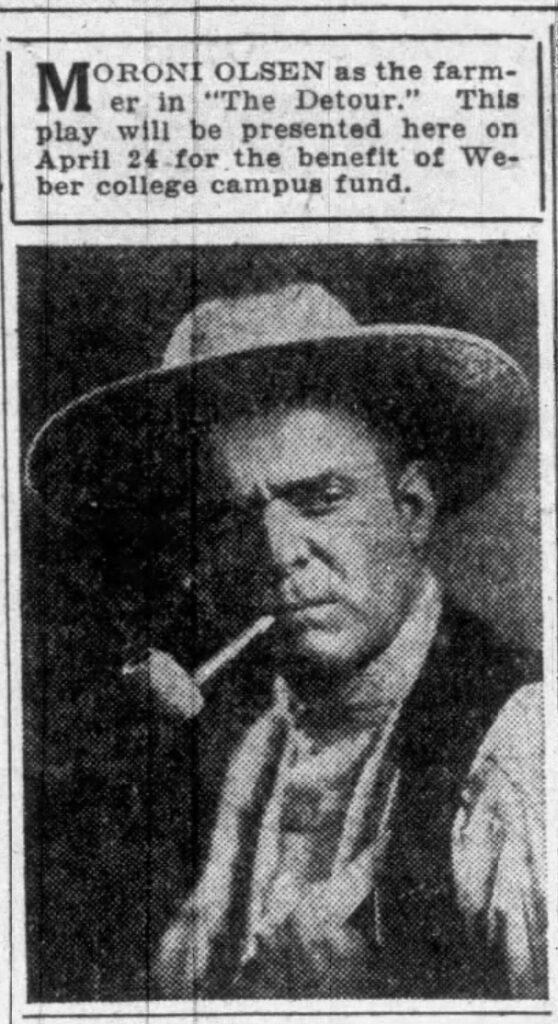

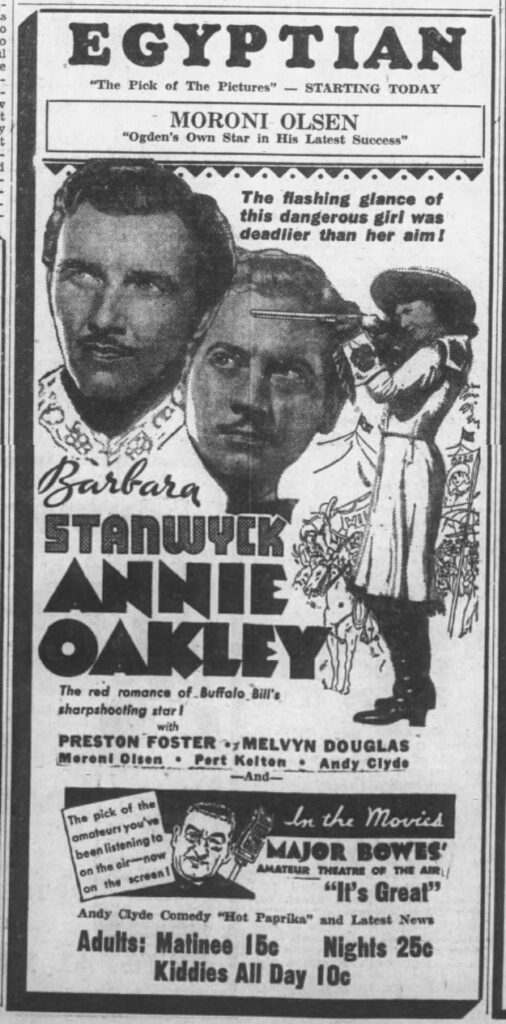
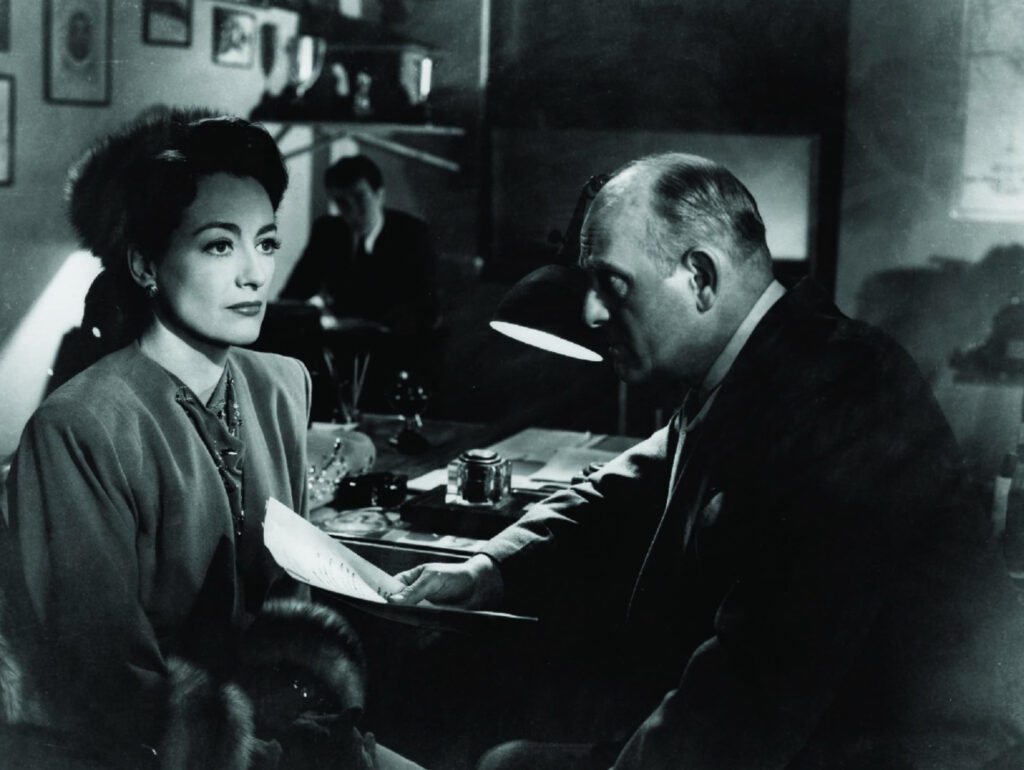
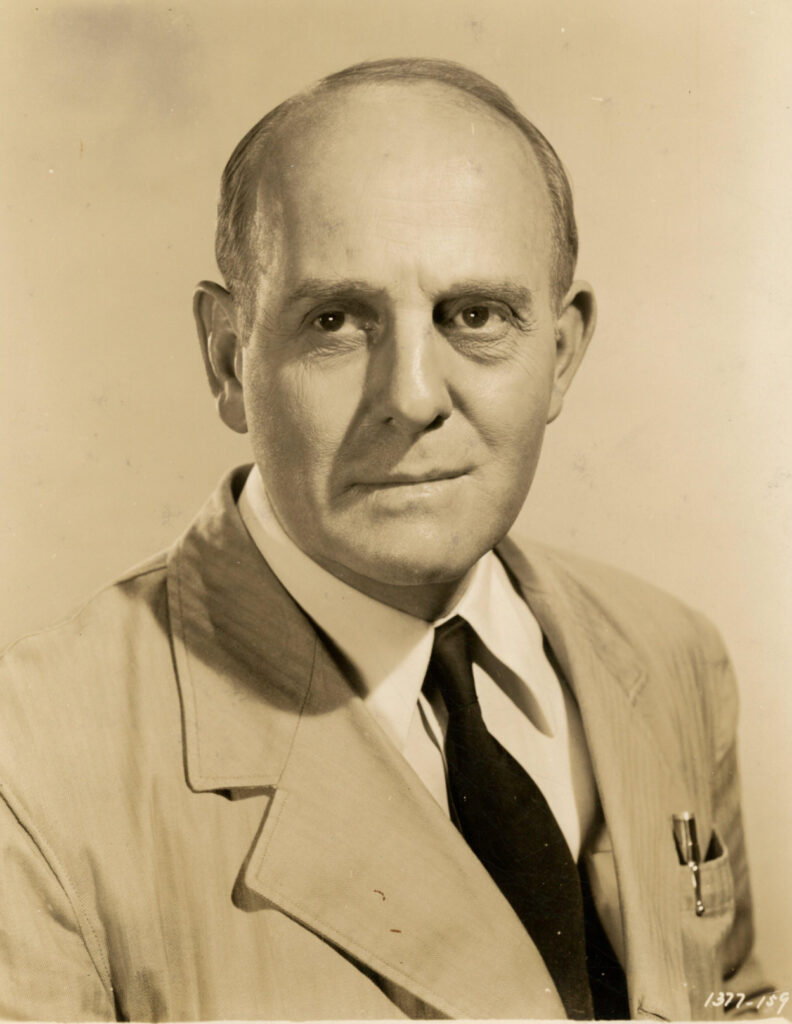
On November 22, 1954, Dorothy Foulger knocked on Moroni Olsen’s apartment door in Los Angeles. No answer. Three days earlier, he had told her he was feeling sick and exhausted, but he hadn’t seen a doctor. Worried, she found the building’s security guard and asked for help. Inside, they found him dead. The coroner ruled it natural causes. He was 65.
Bringing Him Home
Hollywood remembered him as a respected character actor and mentor. Ogden remembered him as one of their own. After a funeral at Forest Lawn, his body returned home to Utah, where he was buried in the family plot in Ogden City Cemetery.
Ever come across a name in a cemetery and felt the need to know more? Tell me about it in the comments!
